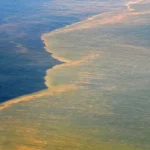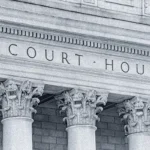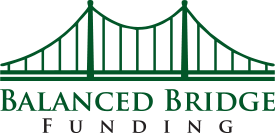The Hawaii Wildfire Settlement Moves Closer Toward Paying Plaintiffs $4 Billion
Hawaii Wildfire Settlement Moves Toward Conclusion – Nearly two years after wildfires devastated the Island of Maui, a $4 billion settlement offers hope and a pathway to recovery for the survivors.
In August 2023, devastating wildfires that swept through Maui, leaving a deep scar on the lives of thousands of residents. It wiped out communities, claimed lives, and reduced vast landscapes to ashes.
Although the flames were finally extinguished, questions about the cause of the fires, and who was responsible continued to swirl. Potential failures in prevention measures, including utility equipment malfunctions, drought management, and disaster preparedness were all brought into question.
Soon after, lawsuits began to emerge against entities suspected of having played a role in the tragedy.
As of May 2025, the state of Hawaii has passed legislation to set aside fund to cover their portion of the $4 billion settlement.
It is possible some plaintiffs may begin receiving funds within the next twelve months. But as we always remind people – settlement does not equal payment. Settlement payments can, and often are, delayed for a multitude of reasons.
Wildfires – A Tragedy That Shook Hawaii
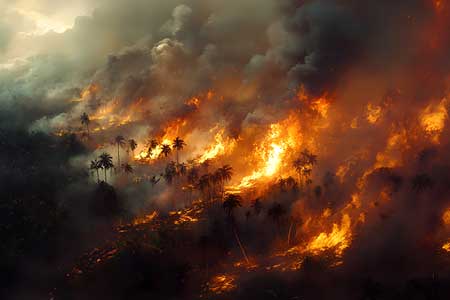
On August 8, 2023, massive wind-driven wildfires ignited on Maui, fueled by a combination of dry conditions and high winds from a passing hurricane to the south of the islands.
The flames ravaged Lahaina and other Upcountry Maui areas, leaving behind a trail of destruction.
Entire neighborhoods were leveled, cultural landmarks were burned, and homes and businesses were destroyed.
Tragically, lives were lost, with the community mourning family, friends, and neighbors in the aftermath.
The scale of the disaster was unparalleled in Hawaii’s history, prompting immediate responses from local, state, and federal emergency services as well as financial aid efforts.
However, as rescue and recovery operations unfolded, questions began to rise about the factors that contributed to the scale of destruction.
Concerns were raised about potential failures in prevention measures, including utility equipment malfunctions, drought management, and disaster preparedness.
Amidst great grief and loss, lawsuits began to emerge against entities suspected of having played a role in the tragedy.
The Road to Accountability and a Historic Settlement
By early 2024, a wave of civil lawsuits had been filed on behalf of survivors, businesses, and even insurance companies.
Among the parties named in the lawsuits were the state of Hawaii, the County of Maui, Hawaiian Electric, Kamehameha Schools, West Maui Land Co., Hawaiian Telcom, and Spectrum/Charter Communications.
Allegations ranged from negligence in managing electrical infrastructure to poor planning and oversight over land use policies and water access.
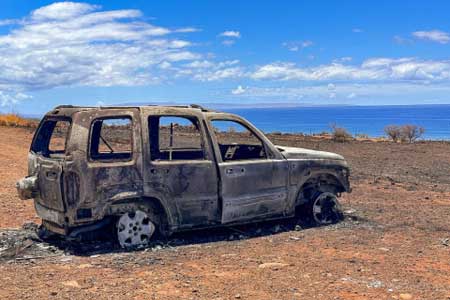
Governor Josh Green committed his administration to streamline the process of finding a resolution to the legal claims, stating that rapid action was essential to help impacted residents rebuild their lives without enduring years of litigation.
By the summer of 2024, and following four months of mediation, an agreement was reached. On August 2, 2024, Governor Green announced a $4.037 billion settlement designed to resolve all wildfire-related claims.
The settlement, supported by the combined contributions of the seven defendants, was impressive in its speed and scope. Often class action lawsuits and MDL’s drag on for years. But in this case, a settlement agreement was reached quickly.
The over $4 Billion settlement will compensate approximately 18,000 plaintiffs who had filed lawsuits for damages stemming from the windstorms and fires.
Challenges Along the Way
Although the settlement represented a turning point, it did not come without hurdles.
Several insurance companies involved in litigation expressed concerns about how the settlement would impact claims they had already paid out.
They argued that they were entitled to recover funds from the defendants and sought to block the finalization of the settlement.
The dispute between insurers and those advocating for direct compensation to survivors escalated to Hawaii’s courts.
The issue reached the Hawaii Supreme Court. In February 2025, the court ruled against the insurance company efforts to halt the settlement.
The court’s decision removed one of the last roadblocks to the settlement’s approval.
Legislative Action and State Contributions
Another critical aspect of the settlement has been the role of the Hawaii state government.
The state pledged to contribute its share to the recovery agreement, in addition to the $65 million it had already allocated to the One ʻOhana Fund for emergency assistance.
However, this financial commitment required the approval of the Hawaii State Legislature, as it involved the allocation of public funds.
The legislature approved the funding in April 2025, and as of May 10th, 2025, the bill HB 1101 is waiting for the Governor’s signature.
Where is the Hawaii Wildfire Settlement Now?
The resolution of the Maui wildfire lawsuits stands as one of the largest and most complex settlements in Hawaii’s history.
The $4 billion figure, though substantial, paints only part of the picture of recovery. When accounting for insurance payouts, federal assistance, and charitable donations, the broader effort to rebuild Maui will total nearly $12 billion.
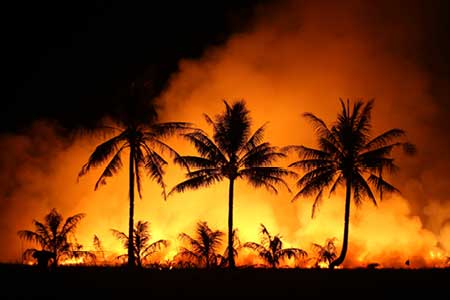
As of the end of April 2025, Hawaii State Legislature has passed HB 1001 which outlines the state’s part in the settlement. That bill has not yet been signed by the governor as of May 10, 2025, but the governor is expected to sign the bill.
If approved, the state of Hawaii will contribute $807 million to the Maui Wildfires Settlement Trust Fund over the course of four years.
The over $800 million will be the state of Hawaii’s portion of the $4 Billion settlement. Hawaii Electric Co will pay $1.99 Billion and Kamehameha Schools will pay over $800 million.
The rest of the $4 Billion will come from West Maui landowners and telecommunications companies who were involved.
Survivors can now begin to focus on rebuilding their lives and finding a way forward, thanks to the collaborative efforts of those involved in reaching this agreement.
The Maui wildfires were one of the most catastrophic events in Hawaii’s recent history. But in its aftermath, the people of Hawaii are demonstrating resilience and commitment to their communities.
The settlement, once fully enacted, will not only serve as financial relief but as an emblem of unity and resolve in the face of tragedy.
Summary – Hawaii Wildfire Settlement
The 2023 Maui wildfires devastated communities, claimed lives, and destroyed homes, businesses, and landmarks.
A $4 billion settlement was announced in August 2024 to compensate approximately 18,000 plaintiffs and resolve lawsuits against the state of Hawaii, Hawaiian Electric, and others.
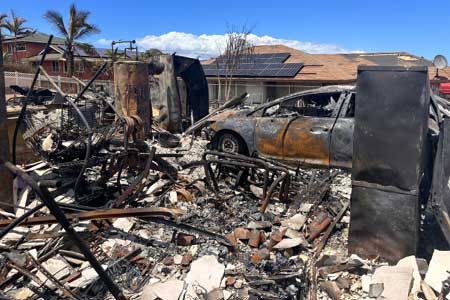
Governor Josh Green emphasized the importance of a swift resolution to aid recovery, describing the settlement as a historic and unprecedented effort.
However, the settlement process faced challenges. Several insurance companies sought to block the agreement, arguing for repayment of claims they had already covered.
The Hawaii Supreme Court, in February 2025, rejected these efforts and prioritized survivors’ compensation.
As of the end of April 2025, Hawaii State Legislature has passed HB 1001 which outlines the state’s part in the settlement.
That bill has not yet been signed by the governor as of May 12, 2025, but the governor is expected to sign the bill.
If approved, the state of Hawaii will contribute $807 million to the Maui Wildfires Settlement Trust Fund over the course of four years.
The rest of the $4 Billion will come from West Maui landowners and telecommunications companies who were involved.
Overall, the settlement underscores a commitment to healing, accountability, and future resilience, with broader recovery efforts totaling nearly $12 billion.
While it cannot undo the loss, the agreement offers survivors hope and resources to rebuild their lives, marking a significant step forward for the Maui community.
Potential Access to Some of Your Hawaii Wildfire Lawsuit Settlement Funds
If you are involved in the Hawaii Wildfire Lawsuit as a plaintiff attorney, post settlement funding for lawsuits can provide valuable assistance once a case has settled.
With a settlement agreement having been reached, attorneys representing clients in the Hawaii Wildfire Lawsuit would be eligible to take out a post settlement advance on their contingency fees owed in the Hawaii wildfire cases.
With documentation of the settlement and the contingency fees, Balanced Bridge would be able to get started.
How a Settlement Advance for Class Action Lawsuits Works

- There is a settlement in a case, but there will be some delay before the awards and contingency fees for the attorneys are distributed.
- Attorney or plaintiff applies for a settlement advance with Balanced Bridge Funding, against their fees or award amount.
- Balanced Bridge examines the case. A determination is made on how much of the fee or award Balanced Bridge will purchase and how much will be advanced to the attorney or plaintiff.
- Balanced Bridge discusses the funding terms with the attorney or plaintiff and provides them with the agreement to review and sign.
- Once that is completed, Balanced Bridge wires the advance directly to a bank account specified by the attorney or plaintiff.
This process is often completed in a day or two but can take longer.
Once the fee or award is distributed, Balanced Bridge is sent its portion to satisfy collection on the advance.
To talk to one of our legal funding specialists about getting help managing your law firm cash flow, please call (267) 457-4540 or email info@balancedbridge.com. Or simply CLICK HERE and fill out our initial form.
Is Post Settlement Funding for Lawsuits a Loan?
A settlement advance for class action lawsuits is not a traditional loan. Rather than lending you money, a legal funding company considers the money you are owed from a lawsuit as an asset, akin to stocks or bonds. Like any other asset you possess, such as a car or house, you have the option to sell it to someone else.
How much of my settlement can I sell to receive an advance?
The answer is – it depends. In most cases, you will be able to sell a large portion of your settlement. But you will not normally be able to sell 100% of it.
What can I spend my Class Action Lawsuit Post Settlement Funding Advance on?
The great news is that once you receive a post settlement advance from a lawsuit, there are no restrictions on how you can use your money. It’s entirely up to you. Treat it just like any other money in your bank account. Spend it as you see fit, knowing it’s yours to use however you wish.
Remember, unlike a loan, which may have a great deal of restrictions and guidelines as far as what you can spend the loan money on, this is not a loan. You are selling your lawsuit settlement and just like if you sold a car, the money from that sale is yours. Selling part of your lawsuit settlement is no different than selling a car or a house – once you’ve sold it, the proceeds from the sale are yours.
About a Post Settlement Advance with Balanced Bridge Funding

Post Settlement Funding for the Hawaii Wildfire Lawsuit Settlement
If you are an attorney representing plaintiffs in the Hawaii Wildfire Lawsuit Settlement, you are eligible right now to receive post settlement funding from Balanced Bridge. CLICK HERE to fill our simple, quick application.
Why Are Settlement Payments Delayed in Lawsuits?
Even after settlements are reached in cases, various delays can hold up distribution of contingency fees for plaintiff attorneys and/or the settlement awards for plaintiffs.
In large scale cases like with Hawaii Wildfire Lawsuit, delays can include a wait for final approval from a judge or just the wait for the defendant to distribute settlement checks.
In those situations, Balanced Bridge provides advances to attorneys and advances to plaintiffs on the pending fees or awards.
About the Authors
Balanced Bridge Funding offers legal funding solutions for plaintiffs, plaintiff attorneys, attorneys, and law firms. We provide post-settlement advances and can help in situations where an agreement has been reached but there will be some delay until distribution of the contingency fee for attorneys and/or the settlement award for plaintiffs.
To talk to one of our legal funding specialists about getting help managing your law firm cash flow, please call (267) 457-4540 or email info@balancedbridge.com Or to apply online, simply CLICK HERE and fill out our quick application.




